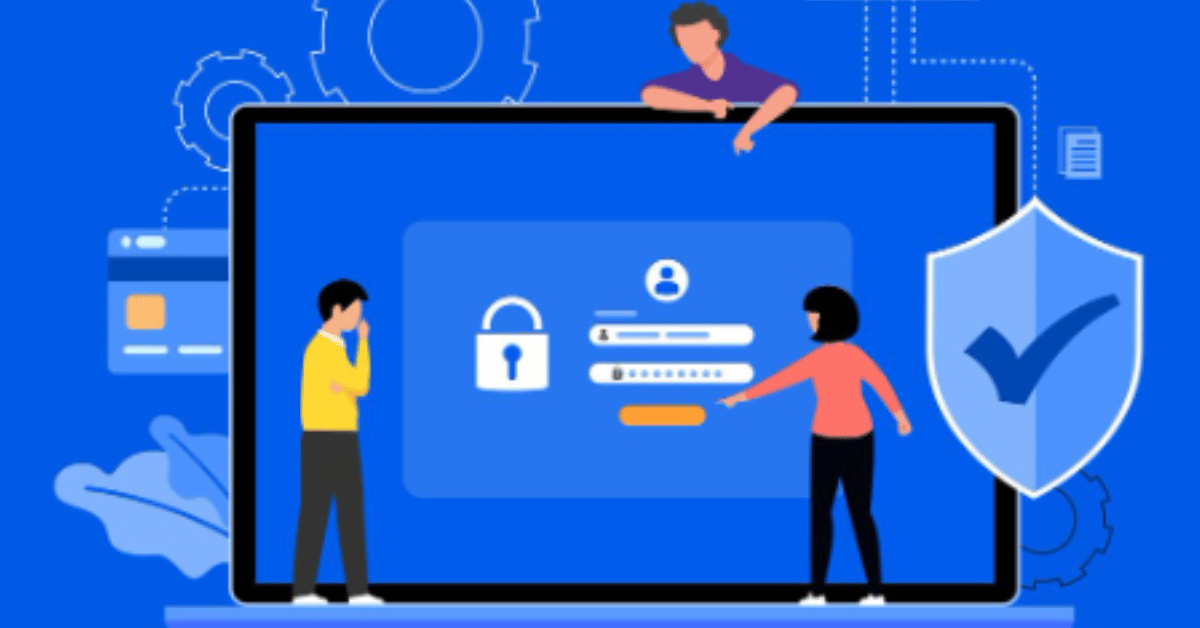For those looking to understand how Vidcom login works, the answer is straightforward: it is the gateway through which users access the Vidcom platform, ensuring personalized, secure, and seamless entry to its suite of communication and management tools. Within the first step of logging in, users validate their identity, unlock features like video conferencing, file sharing, and integrated messaging, and ensure their account remains protected against unauthorized use. Many users search for “Vidcom login” not just to sign in but to also explore account creation, password recovery, mobile access, and how the login process integrates with modern workplace systems. This guide unpacks each layer of Vidcom login—from its purpose to advanced troubleshooting—while offering practical advice on maximizing efficiency and keeping your account safe. Understanding these elements ensures smoother digital communication and a better user experience overall.
Introduction to Vidcom Login
Vidcom login represents the foundational access point to the Vidcom platform, a digital service known for offering enterprise-level video conferencing, collaborative tools, and streamlined communication. Unlike casual apps, Vidcom is often deployed in organizational environments, making its login procedure both a technical requirement and a security safeguard. Users enter credentials, often with additional authentication steps, to ensure only verified participants enter the platform. This seemingly small step carries large implications: it safeguards confidential conversations, preserves business data, and ensures compliance with security policies. For new users, the login process can initially feel complex, involving email verification, two-factor authentication, or device recognition. However, once mastered, it provides a frictionless experience where communication is immediate and reliable. Logging in is not merely about access but also about accountability, as every login event is typically logged for transparency. “In digital workspaces, trust begins with secure entry,” as one IT director described the essence of login portals.
Why Vidcom Login Matters
The login process is more than a formality; it defines how organizations maintain order and individuals manage identity. Vidcom login ensures that sensitive files exchanged during meetings are not intercepted, and that recordings, chat histories, or project notes remain in the hands of intended participants only. For remote teams, the login becomes the virtual office door. Without it, collaboration risks collapse into chaos. Managers depend on login authentication to verify attendance, while employees rely on it to preserve the integrity of their contributions. A poorly secured login could expose a company to leaks or disruptions, making it critical to follow guidelines for strong passwords, secure networks, and regular credential updates. Additionally, Vidcom’s login system integrates with identity providers, allowing businesses to centralize employee access across multiple applications. This centralization reduces confusion and improves compliance. As a result, the login process embodies the balance between simplicity for users and robust security for administrators.
How to Create a Vidcom Account
Before logging in, a user must create a Vidcom account, which begins with registration through the official Vidcom portal or organizational invitation. The account creation form typically requests full name, company details (if applicable), email address, and a strong password. Once submitted, a verification email is dispatched, requiring confirmation before account activation. This double-step process ensures that the account is tied to a verified digital identity. Vidcom also allows administrators to set up bulk accounts for teams, simplifying onboarding. Account setup can be customized with profile photos, time zone selection, and language preferences, which helps personalize the platform for global users. Importantly, users are advised to select unique passwords that mix characters, numbers, and symbols, reducing the chance of compromise. Vidcom’s system may also prompt for secondary recovery options such as security questions or backup email addresses. These safeguards help users regain access quickly in case of forgotten credentials.
Table 1: Steps for Creating and Logging into Vidcom
| Step | Action Required | Purpose |
|---|---|---|
| 1 | Visit Vidcom website or app | Access registration and login portal |
| 2 | Enter details (name, email, password) | Create a personal or organizational account |
| 3 | Verify email or phone number | Confirm ownership and activate account |
| 4 | Customize settings (photo, language) | Personalize platform experience |
| 5 | Login with credentials | Secure access to Vidcom dashboard |
| 6 | Enable two-factor authentication | Strengthen account security |
Vidcom Login on Desktop and Mobile
Vidcom offers login access on both desktop browsers and mobile applications, ensuring flexibility for users working across devices. On desktop, the login portal is optimized for web browsers, offering quick loading times and compatibility with organizational sign-in systems. Users typically enter their email and password before being prompted for multi-factor authentication if enabled. On mobile, Vidcom provides apps available on iOS and Android. These apps feature fingerprint and face recognition for faster, secure login. Mobile logins synchronize instantly with desktop sessions, allowing users to switch between devices without losing conversation history or meeting access. Administrators encourage enabling biometric authentication on mobile for added security. Whether using desktop or mobile, the login experience is designed to be intuitive and to accommodate both casual use and enterprise demands. The adaptability of the login system illustrates Vidcom’s commitment to accessible yet secure digital communication.
Common Issues with Vidcom Login
Despite the streamlined design, users occasionally encounter issues with the login process. Forgotten passwords remain the most common obstacle, followed by errors in entering email addresses or usernames. Network restrictions or outdated browser versions may also interfere with login attempts. For mobile users, app cache or outdated app versions can cause repeated login failures. Vidcom mitigates these issues with built-in password reset tools and responsive support systems. Users receive reset links through email, and organizations can escalate persistent problems to Vidcom’s IT support team. Another recurring issue is two-factor authentication codes not being delivered promptly, often due to network delays. In such cases, backup codes generated during initial setup provide alternative access. Troubleshooting login problems requires patience and systematic checks, from verifying internet connectivity to clearing cookies. “Most login failures are solved by small adjustments,” noted one support engineer, emphasizing the importance of methodical troubleshooting.
Table 2: Common Vidcom Login Issues and Fixes
| Issue | Likely Cause | Suggested Fix |
|---|---|---|
| Forgotten password | User error | Use password reset link via email |
| Invalid credentials | Mistyped email or password | Double-check input, enable password manager |
| Two-factor delay | Network congestion | Use backup authentication codes |
| Browser error | Outdated browser | Update browser, clear cache |
| Mobile app failure | Outdated app or cache issue | Update app, clear app cache |
Security Features in Vidcom Login
Vidcom emphasizes security through multiple layers embedded within its login system. Multi-factor authentication remains the most prominent, requiring users to verify identity through SMS, email codes, or authentication apps. Biometric login options such as fingerprint or face recognition enhance mobile login safety. Additionally, Vidcom integrates with Single Sign-On (SSO) providers, allowing enterprises to consolidate access management. The login infrastructure is built with encryption protocols that secure data transfer between user devices and Vidcom servers. Suspicious login attempts trigger alerts, enabling users to respond quickly by resetting credentials or contacting administrators. For organizations handling sensitive data, administrators can enforce strict login policies, including automatic session expiration and IP-based restrictions. These measures help balance usability with resilience against cyber threats. In practice, Vidcom login becomes the frontline defense, ensuring trust in every virtual meeting, message, and shared document.
Troubleshooting Password and Access Recovery
Recovering access to Vidcom is intentionally straightforward yet secure. Users who forget their password can initiate a reset via the login page, receiving a link through their registered email. This link directs them to create a new password while meeting security requirements. For users with two-factor authentication enabled, recovery requires access to backup codes or linked authentication devices. Administrators may provide temporary access credentials for urgent situations, particularly in enterprise environments where downtime can hinder productivity. In rare cases of lost recovery options, Vidcom’s support team verifies user identity through additional checks, such as company confirmation or government-issued identification. Maintaining updated recovery methods is critical; users are advised to periodically update backup emails or phone numbers. Password recovery is not just about restoring access but also about re-establishing account security by ensuring unauthorized users cannot exploit the recovery process.
Benefits of a Smooth Vidcom Login Experience
A streamlined login experience directly impacts productivity and user satisfaction. When users access Vidcom quickly, they spend more time engaging in meaningful communication and less time troubleshooting. Efficient login processes build confidence, especially for those in high-stakes meetings where delays can disrupt agendas. Organizations benefit from reduced support requests and improved adoption rates when the login system is intuitive. Enhanced login experiences also encourage employees to follow best practices like enabling two-factor authentication, as the perceived inconvenience is minimized. In competitive digital communication markets, the quality of a login system often distinguishes platforms. By prioritizing user-friendly login features, Vidcom strengthens its reputation as a reliable partner in digital collaboration. “Convenience without compromise defines the modern login,” explained one industry analyst, capturing the essence of Vidcom’s approach.
Conclusion
Vidcom login is far more than a technical formality; it is the core entry point that underpins security, accessibility, and efficiency within the Vidcom platform. By answering the user’s intent—how to log in, troubleshoot, and secure their account—this guide has detailed every essential aspect. From account creation and desktop-mobile synchronization to troubleshooting common problems and understanding advanced security features, the login process emerges as the backbone of user trust. For organizations, it represents a policy tool that balances convenience with regulatory compliance, while for individuals, it ensures seamless participation in professional and personal communication. Tables outlining steps and troubleshooting highlight the structured approach Vidcom takes in simplifying complexity. As digital platforms evolve, the importance of login systems will only grow. Vidcom’s model shows how secure access can simultaneously empower productivity and safeguard information, reminding us that in the digital age, the act of logging in is the first step toward building trust.
FAQs)
Q1: How do I log in to Vidcom for the first time?
A: Visit the Vidcom website or app, enter your registered email and password, then verify with any required authentication steps.
Q2: What should I do if I forget my Vidcom password?
A: Use the “Forgot Password” option on the login page. A reset link will be sent to your registered email address.
Q3: Can I access Vidcom login on both desktop and mobile devices?
A: Yes, Vidcom supports logins on desktop browsers and mobile apps, with features like biometrics on smartphones for convenience.
Q4: How secure is the Vidcom login process?
A: Vidcom uses encryption, two-factor authentication, and optional Single Sign-On (SSO) integrations to maintain strong security across devices.
Q5: What if my two-factor authentication code does not arrive?
A: You can use backup codes created during setup or request assistance from Vidcom support to regain account access.











